Why do women wear dresses and skirts? This intriguing question invites us on a captivating journey through history, culture, and fashion. From the flowing robes of ancient civilizations to the chic designs of modern runways, dresses and skirts have played an enduring role in women’s wardrobes, embodying both practicality and elegance.
Throughout the ages, these garments have evolved to reflect societal norms, personal styles, and the ever-changing landscape of fashion. Join us as we explore the multifaceted reasons why women continue to embrace the allure of dresses and skirts.
Cultural and Historical Significance of Dresses and Skirts
Dresses and skirts have been a fundamental part of human attire for millennia, serving both practical and symbolic purposes. Their origins can be traced back to ancient civilizations, where they were worn by both men and women for protection, modesty, and cultural expression.
Over time, dresses and skirts have evolved in design and function, reflecting cultural norms, social status, and fashion trends. In many cultures, they have become primarily associated with women’s attire, carrying significant cultural and historical meaning.
Origins and Evolution of Dresses and Skirts
The earliest evidence of dresses and skirts dates back to the Stone Age, where they were made from animal skins and plant fibers. In ancient Egypt, women wore simple linen dresses called kalasiris, while men wore loincloths. In ancient Greece, women wore long, flowing dresses called chitons, while men wore tunics.
During the Middle Ages in Europe, dresses and skirts became more elaborate, with women wearing garments made from fine fabrics such as silk and velvet. The Renaissance period saw the introduction of new styles, including the bodice and the hoop skirt.
In the 19th century, dresses and skirts underwent significant changes, with the advent of the sewing machine and the rise of the fashion industry. New fabrics and designs emerged, and dresses and skirts became more accessible to people of all social classes.
Traditional Dresses and Skirts from Various Regions
Around the world, there is a wide variety of traditional dresses and skirts that reflect the unique cultural heritage of each region.
- In India, women wear the sari, a long piece of fabric that is draped over the body in various styles.
- In Japan, women wear the kimono, a long, flowing robe that is tied at the waist with a sash called an obi.
- In Scotland, men wear the kilt, a pleated skirt that is often made from tartan fabric.
- In Mexico, women wear the rebozo, a long, colorful shawl that can be used as a dress or a wrap.
Practicality and Functionality of Dresses and Skirts
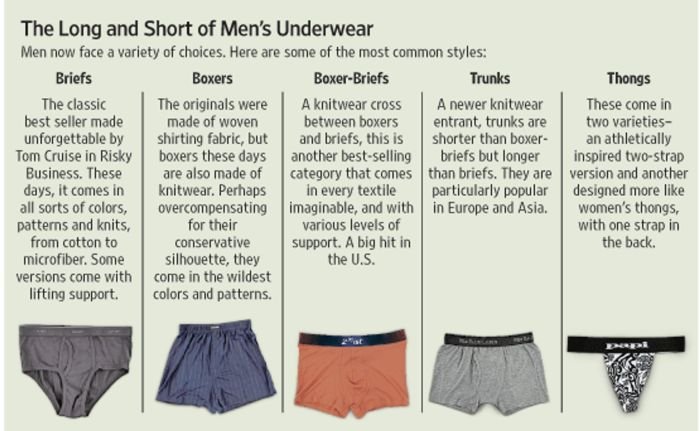
Dresses and skirts have been cherished garments for centuries, not only for their aesthetic appeal but also for their practicality and functionality. These garments offer a range of advantages, making them suitable for various occasions and body types.
Comfort and Movement
Dresses and skirts provide unparalleled comfort due to their loose and flowy nature. They allow for ease of movement, making them ideal for everyday activities, casual outings, and even formal events. The lack of restrictive tailoring ensures freedom of movement, allowing the wearer to move with grace and confidence.
Breathability and Versatility
Dresses and skirts are crafted from breathable fabrics such as cotton, linen, and silk, making them ideal for warm weather. The loose fit allows for air circulation, keeping the wearer cool and comfortable. Additionally, dresses and skirts come in a wide variety of styles, lengths, and colors, making them suitable for a diverse range of occasions, from casual to formal.
Flattering Different Body Types
With the vast selection of dresses and skirts available, it’s easy to find styles that flatter different body types. Empire waist dresses, for example, accentuate the bust while concealing the midsection, making them ideal for those with an apple-shaped figure.
A-line skirts, on the other hand, create a balanced silhouette, flattering both pear-shaped and hourglass figures.
Social and Cultural Implications of Dresses and Skirts
Dresses and skirts hold significant social and cultural implications, reflecting societal norms and expectations. They play a vital role in formal events, symbolizing elegance and occasion-appropriate attire. Moreover, dresses and skirts can convey messages about femininity, modesty, and personal style.
There are numerous reasons why women choose to wear dresses and skirts. These garments offer comfort, versatility, and can enhance a woman’s figure. For special occasions like prom, terani prom dresses are particularly popular. These exquisite gowns combine elegance and glamour, making them perfect for creating unforgettable memories.
Ultimately, the choice to wear dresses and skirts remains a personal one, allowing women to express their individuality and style.
Role in Formal Events
In formal settings, such as weddings, proms, and other special occasions, dresses and skirts are often the preferred choice of attire. These garments embody a sense of elegance and sophistication, adhering to societal expectations of appropriate dress for such events.
The formality of the occasion dictates the length, style, and fabric of the dress or skirt, contributing to the overall ambiance and decorum of the gathering.
Expression of Femininity and Modesty
Dresses and skirts have long been associated with femininity and modesty. In many cultures, women wearing dresses or skirts is seen as a symbol of grace, refinement, and adherence to societal norms. The coverage provided by these garments aligns with cultural expectations of modesty, particularly in formal or conservative settings.
However, it’s important to note that the interpretation of femininity and modesty can vary across cultures and individuals.
Personal Style and Expression
Beyond their social and cultural significance, dresses and skirts also serve as a means of personal style and expression. Women have the freedom to choose from a wide range of styles, lengths, colors, and fabrics, allowing them to express their individuality and creativity.
Dresses and skirts can reflect a woman’s personal taste, whether it be classic, bohemian, or edgy, and can enhance her confidence and self-expression.
Fashion and Style Trends in Dresses and Skirts
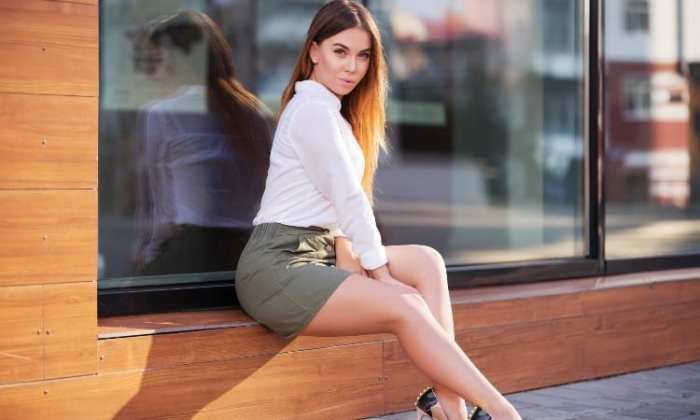
In the realm of fashion, dresses and skirts have remained timeless garments, constantly evolving to reflect the changing tastes and sensibilities of society. From the elaborate gowns of bygone eras to the modern, minimalist designs of today, these garments continue to captivate and inspire fashion enthusiasts worldwide.
The latest trends in dress and skirt designs showcase a diverse range of styles, from classic silhouettes to avant-garde creations. Designers and fashion icons play a pivotal role in shaping these trends, introducing innovative designs and pushing the boundaries of fashion.
The Influence of Designers and Fashion Icons
Renowned designers such as Coco Chanel, Christian Dior, and Yves Saint Laurent have left an indelible mark on the history of dress and skirt design. Their creations have not only shaped the fashion landscape but have also influenced the way women perceive and express themselves through clothing.
Contemporary fashion icons, such as Rihanna, Beyoncé, and Zendaya, continue to inspire fashion trends through their bold and eclectic style choices. They showcase how dresses and skirts can be incorporated into different wardrobes and personal styles, empowering women to express their individuality and creativity.
Incorporating Dresses and Skirts into Different Wardrobes
Dresses and skirts offer endless possibilities for creating a diverse wardrobe. From casual sundresses to elegant evening gowns, there is a style to suit every occasion and personal preference.
- For a casual and effortless look, pair a simple A-line dress with sneakers or sandals.
- To elevate your style for a night out, opt for a bodycon dress with statement heels and accessories.
- For a sophisticated and professional appearance, choose a tailored skirt with a blouse or blazer.
By incorporating dresses and skirts into different wardrobes, women can create a versatile and stylish collection that reflects their unique sense of style.
Types and Variations of Dresses and Skirts
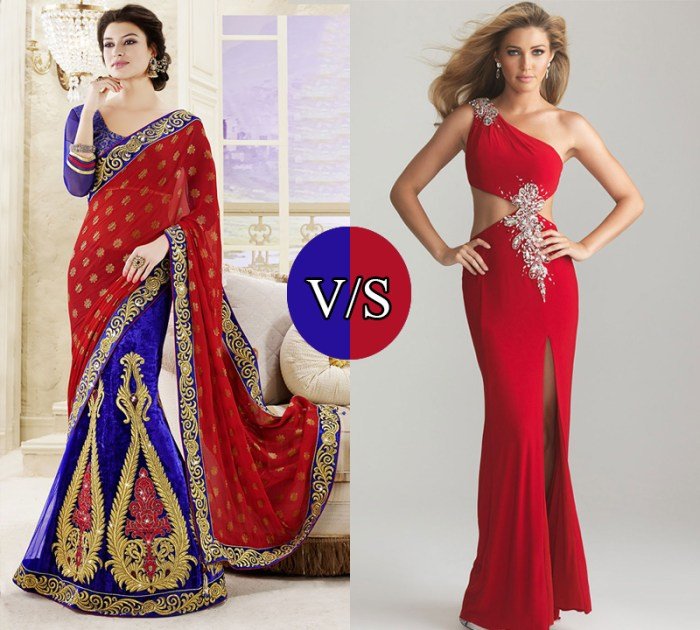
Dresses and skirts come in a vast array of types and variations, each with its unique characteristics, silhouettes, and lengths. The diversity of these garments allows for a wide range of styling options, making them suitable for various occasions and personal preferences.
The following table provides a comprehensive overview of some of the most common types of dresses and skirts, along with their distinctive features and styling suggestions:
Dress Types
- Maxi Dress:A long, flowing dress that typically extends to the ankles or beyond. Maxi dresses are known for their comfort, versatility, and flattering silhouette. They can be styled casually with sandals and a denim jacket or dressed up with heels and accessories for formal events.
- Midi Dress:A dress that falls below the knees but above the ankles. Midi dresses offer a balance between the coverage of a maxi dress and the mobility of a shorter dress. They can be dressed up or down depending on the occasion, making them a versatile choice for everyday wear.
- Mini Dress:A short dress that typically ends above the knees. Mini dresses are often associated with a youthful and playful style. They can be paired with sneakers for a casual look or heels for a more formal occasion.
- Cocktail Dress:A semi-formal dress that is typically worn to evening events. Cocktail dresses vary in length but generally fall between the knees and mid-thigh. They are often made from luxurious fabrics and feature embellishments such as lace, beading, or sequins.
- Formal Dress:A floor-length dress that is worn to formal events such as weddings, proms, or black-tie affairs. Formal dresses are typically made from high-quality fabrics and feature elaborate designs and details.
- Evening Dress:A dress that is specifically designed for evening wear. Evening dresses are often more glamorous and sophisticated than other types of dresses and may feature intricate beading, embroidery, or other embellishments.
Skirt Types, Why do women wear dresses and skirts
- Maxi Skirt:A long, flowing skirt that typically extends to the ankles or beyond. Maxi skirts are comfortable and versatile, making them suitable for both casual and formal occasions. They can be paired with a variety of tops, from crop tops to blouses to sweaters.
- Midi Skirt:A skirt that falls below the knees but above the ankles. Midi skirts offer a balance between the coverage of a maxi skirt and the mobility of a shorter skirt. They can be dressed up or down depending on the occasion, making them a versatile choice for everyday wear.
- Mini Skirt:A short skirt that typically ends above the knees. Mini skirts are often associated with a youthful and playful style. They can be paired with a variety of tops, from t-shirts to crop tops to blouses.
- Pencil Skirt:A straight, fitted skirt that falls below the knees. Pencil skirts are known for their flattering silhouette and are often worn in professional settings. They can be paired with a variety of tops, from blouses to sweaters to blazers.
- A-Line Skirt:A skirt that flares out from the waist to form an A-shape. A-line skirts are flattering on a variety of body types and can be dressed up or down depending on the occasion. They can be paired with a variety of tops, from crop tops to blouses to sweaters.
- Circle Skirt:A skirt that is cut in a full circle, creating a wide, flowing silhouette. Circle skirts are often associated with a vintage or bohemian style. They can be paired with a variety of tops, from crop tops to blouses to sweaters.
Materials and Fabrics Used in Dresses and Skirts

Dresses and skirts are crafted from a wide array of fabrics, each contributing to their unique drape, texture, and overall aesthetic. The choice of fabric plays a crucial role in determining the garment’s suitability for various occasions and seasons.
Natural Fibers
- Cotton:Known for its breathability and comfort, cotton is a versatile fabric used in both casual and formal dresses and skirts. It absorbs moisture effectively, making it ideal for warm weather.
- Linen:Linen is a lightweight and durable fabric with a natural wrinkle-prone texture. It is often used in summer clothing due to its cooling properties.
- Silk:Silk is a luxurious and elegant fabric known for its smooth, lustrous texture. It drapes beautifully and is commonly used in formal dresses and skirts.
Synthetic Fibers
- Polyester:Polyester is a wrinkle-resistant and durable synthetic fiber often used in blended fabrics. It is less breathable than natural fibers but can be blended with other materials to improve its properties.
- Nylon:Nylon is a strong and elastic synthetic fiber that is often used in activewear and sportswear. It is resistant to water and abrasion.
- Lace:Lace is a delicate and intricate fabric made from fine threads or yarns. It is often used as an accent or overlay on dresses and skirts, adding a touch of femininity and elegance.
Caring for Dresses and Skirts
The longevity of dresses and skirts depends on proper care and maintenance. Here are some tips:
- Read the care label carefully and follow the instructions for washing, drying, and ironing.
- Use a gentle detergent and avoid using bleach on delicate fabrics like silk and lace.
- Hang dresses and skirts on sturdy hangers to prevent stretching or sagging.
- Store garments in a cool, dry place to prevent fading and damage from moisture.
Accessories and Styling for Dresses and Skirts
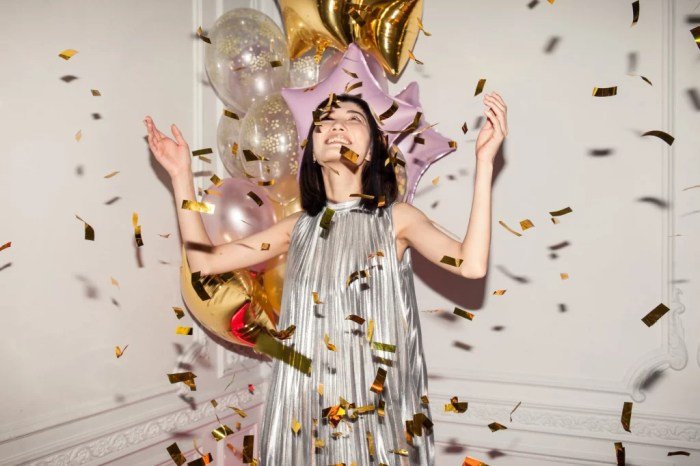
Accessorizing dresses and skirts can elevate your look and create different styles. Jewelry, shoes, bags, and other accessories can complement your outfit and make a statement. Layering and combining different pieces can also create unique and eye-catching ensembles. Consider the season and occasion when selecting accessories and styling your dress or skirt to ensure a cohesive and appropriate look.
Jewelry
Jewelry can add a touch of elegance or a pop of color to your dress or skirt. Necklaces, earrings, bracelets, and rings can complement your neckline, highlight your face, or add a touch of sparkle. Choose jewelry that complements the style of your dress or skirt and the occasion.
Shoes
Shoes can complete your look and provide both style and comfort. Heels can elongate your silhouette and add a touch of sophistication, while flats can provide a more casual and comfortable option. Consider the length and style of your dress or skirt when selecting shoes.
Bags
Bags are both functional and fashionable. Choose a bag that complements the size and style of your dress or skirt. A clutch bag can add a touch of elegance, while a tote bag can provide ample space for your essentials.
Consider the occasion and your personal style when selecting a bag.
Other Accessories
Other accessories, such as scarves, belts, and hats, can add interest and personality to your outfit. A scarf can add warmth and texture, while a belt can define your waist and create a more tailored look. A hat can provide sun protection and add a touch of style.
Layering and Combining
Layering and combining different pieces can create unique and stylish looks. A cardigan or jacket can add warmth and coverage to a dress or skirt. A belt can cinch in your waist and create a more flattering silhouette. A scarf can add a pop of color or pattern.
Experiment with different combinations to find the look that best suits you.
Styling for Different Seasons and Occasions
Consider the season and occasion when styling your dress or skirt. For warmer weather, choose lighter fabrics and colors. For cooler weather, opt for heavier fabrics and darker colors. For formal occasions, choose more elegant accessories and fabrics. For casual occasions, choose more relaxed and comfortable pieces.
Conclusion: The Enduring Appeal of Dresses and Skirts

Dresses and skirts have stood the test of time, remaining popular and versatile garments in women’s wardrobes. Their appeal stems from a combination of practicality, style, and cultural significance.
The enduring appeal of dresses and skirts lies in their timeless elegance and versatility. They can be dressed up or down, making them suitable for a wide range of occasions, from casual outings to formal events.
Dresses and skirts are popular clothing choices for women because they offer comfort, versatility, and style. Whether it’s for a casual day out or a formal evening event, there’s a dress or skirt to suit every occasion. For those special occasions where you want to make a statement, consider a red party dress size 14.
These dresses are designed to flatter your figure and turn heads wherever you go. So, next time you’re wondering what to wear, reach for a dress or skirt and enjoy the confidence and style that comes with it.
Future of Dress and Skirt Design and Trends
The future of dress and skirt design is expected to be influenced by several factors, including sustainability, inclusivity, and technological advancements.
- Sustainability:Designers are increasingly using eco-friendly materials and production methods to create more sustainable dresses and skirts.
- Inclusivity:Designers are embracing body positivity and inclusivity by creating dresses and skirts that cater to a wider range of body types and sizes.
- Technological Advancements:Advancements in technology, such as 3D printing and virtual reality, are opening up new possibilities for dress and skirt design.
Last Point
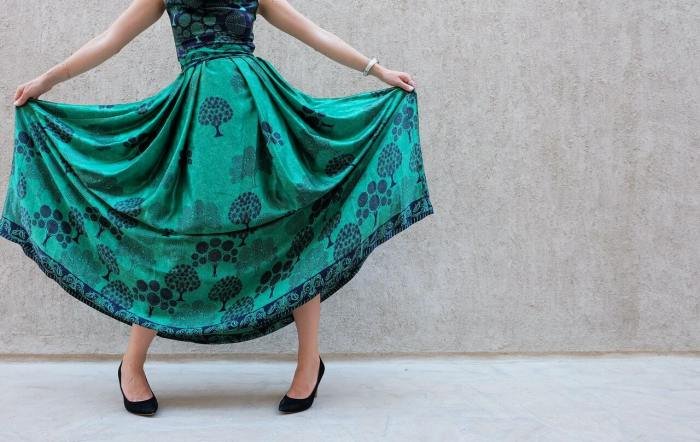
In conclusion, dresses and skirts remain a beloved staple in women’s fashion, transcending time and trends. Their versatility, comfort, and ability to express individuality have ensured their enduring appeal. As fashion continues to evolve, we can expect to see new interpretations and innovations in these iconic garments, further cementing their place in the hearts of women worldwide.
Question Bank: Why Do Women Wear Dresses And Skirts
Are dresses and skirts only suitable for formal occasions?
No, dresses and skirts can be worn in a wide range of settings, from casual outings to formal events. Their versatility allows for endless styling possibilities, making them a wardrobe essential for women of all ages.
What factors should I consider when choosing a dress or skirt?
When selecting a dress or skirt, consider your body type, personal style, and the occasion. Choose pieces that flatter your figure and make you feel confident and comfortable.
How can I accessorize dresses and skirts?
Accessories can elevate the look of any dress or skirt. Experiment with jewelry, shoes, bags, and scarves to create different styles and complement your outfit.